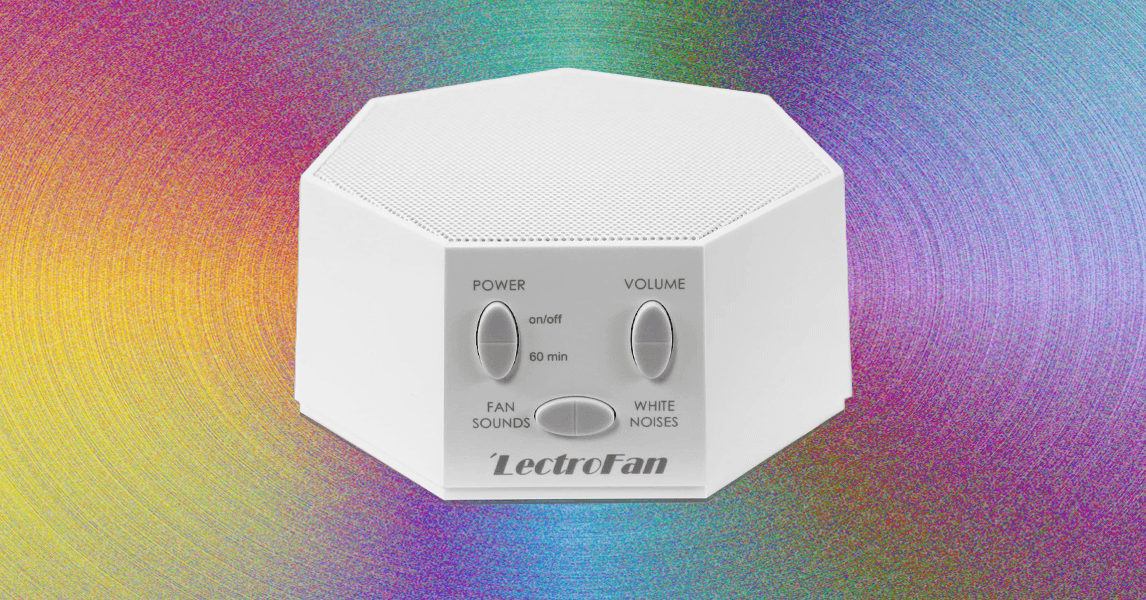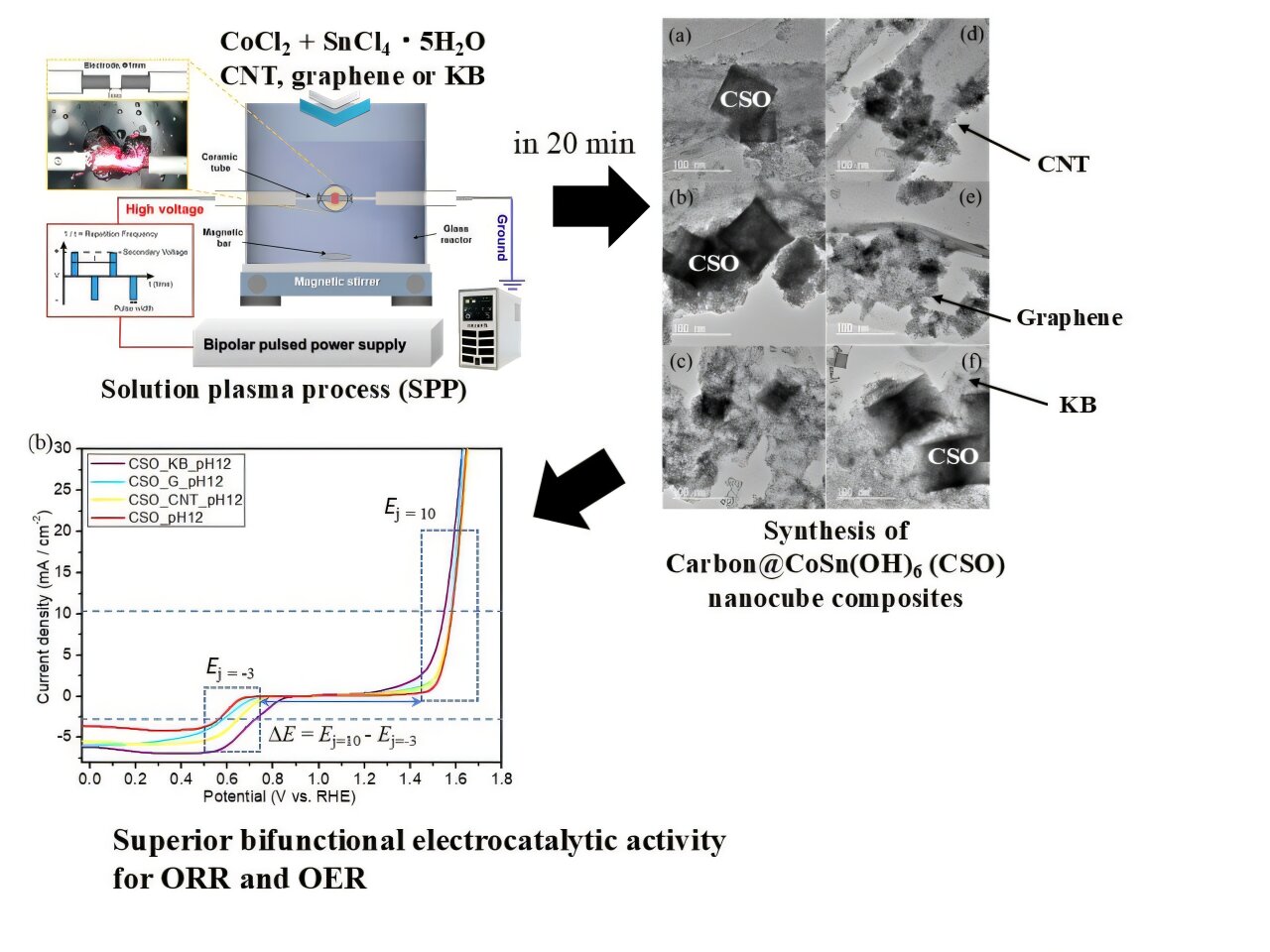Tech
Sound Machines Can Be a Game-Changer For Light Sleepers—Here Are Our Tested Picks

Compare Our Top Picks
More Sound Machines We Like
Photograph: Julia Forbes
Yogasleep Rohm+ Travel White Noise Machine for $50: This is a more refined, adult sound machine option that looks significantly more chic than your standard sound machine (if that matters to you, that is). The timer and white noise options are solid, but for the price and audio quality, Momcozy’s portable option runs circles around the Rohm+.
Baby Brezza Sleep and Soother for $25: This is super light, can run on batteries or be plugged in, and has 18 sleep sounds and three timer options (or it plays continuously). There’s also a night light with three brightness levels. —Medea Giordano
Yogasleep Hushh 2 Portable Sound Machine for $30: The Hushh 2 is another great portable sound machine that you should consider. It has six sounds, three timer options, and a nice night light for softly illuminating your bedside table or guiding your way to the bathroom. The brand says this model is its most durable sound machine. I didn’t fling it down the stairs, but it has held up to falling off my nightstand. —Medea Giordano
Lectrofan Evo for $60: Another solid option from the brand that makes our top pick. The Evo has a few more sound choices (like ocean noises) and looks nicer, but we prefer the buttons on the Classic. They’re better for fiddling with in the dark. This one also jumped in price recently. —Medea Giordano
Dreamegg D1 for $60: This one plays a lot of the same sounds as the D11 portable machine, with a handful more fans and a spectrum of noises. The control panel is matte and soft to the touch, and you can set it to play continuously or for 30, 60, or 90 minutes. I tried the white version, but you can get a few other nice colors on the Dreamegg site. The rim also lights up. —Medea Giordano
Encalife Sound Machine for $46: This little sound machine has a blue light that you can match your breathing to in order to relax. You’ll also likely find it on sale often, which is good because I wouldn’t spend too much on it—there are better options on this list for less. —Medea Giordano
Sound Machines to Avoid
Allway Aqua10 for $120: I love that this looks like a cute Marshall amp and works as a decent-sounding Bluetooth speaker for sleep sounds and anything else you want to listen to the rest of the day. You need the Allway app to access the sounds, which include crackling fires, busy cafes, a spectrum of colored noises, and a wide selection of instrumentals. They’ll play for anywhere from five to 120 minutes. The Aqua10 also has a humidifier function, which looks extremely cool paired with lights that illuminate the vapor like a fire. But I found it to be fussy and leaky, and it seemed to stop even though the reservoir was full. It’s no longer available on Amazon, which might say something about its longevity. —Medea Giordano
Frequently Asked Questions
Can You Keep a White Noise Machine on All Night?
If you plan on keeping your white noise machine playing sound on loop all night, make sure first that it has the capacity to do so. Some machines run on 30-, 60-, or 90-minute timers that auto-shut off, while others are continuous.
Does a Fan Make a Good White Noise Machine?
In a pinch, you can use a desk or box fan in place of a white noise machine. It will create consistent noise (as well as temperature control for hot sleepers) to help you fall asleep. However, if you aren’t wanting to keep the room a bit cooler, or want more varied noise options, a sound machine’s the stronger choice.
How Does WIRED Select Models to Be Reviewed?
WIRED’s product recommendations are made in service to readers based on what’s new, popular, and useful on the market. While we do get a small cut of most sales when readers click to buy recommended products, choices are made independent of revenue considerations. Samples are either provided by the companies or purchased and expensed.
What Does WIRED Do With the Sound Machines After Testing Them?
Just like all products we test, including mattresses, pillows, sheets, and more, everything is donated to our local communities when testing is finished.
Power up with unlimited access to WIRED. Get best-in-class reporting that’s too important to ignore. Includes unlimited digital access and exclusive subscriber-only content. Subscribe Today.
Tech
Plasma-based method creates efficient, low-cost catalysts for metal–air batteries

Due to the intense global impact of fossil fuel overuse on air quality and climate, the search for advanced clean energy solutions has become critical. Metal–air batteries offer a game-changing alternative, holding the potential to replace combustion engines in various applications.
By electrochemically converting oxygen from the air into power, these batteries achieve theoretical energy densities up to twelve times higher than lithium-ion cells, delivering unprecedented efficiency with zero operational emissions.
Challenges facing metal–air battery adoption
Despite their theoretical advantages, metal–air batteries have yet to achieve widespread commercial viability due to several critical obstacles. Current high-performance catalysts primarily depend on expensive precious metals, such as platinum and ruthenium, rendering them economically unfeasible for mass production and large-scale deployment.
Furthermore, most existing catalyst materials are monofunctional, efficiently driving only one of the two essential electrochemical processes—the oxygen reduction reaction (ORR) or the oxygen evolution reaction (OER)—but not both.
Compounding these issues, the complex, multi-step synthesis processes required for these catalysts inflate manufacturing costs and severely restrict scalability.
Innovative research tackles catalyst limitations
Against this backdrop, a research team led by Professor Takahiro Ishizaki from the College of Engineering at Shibaura Institute of Technology, Japan, and Assistant Professor Sangwoo Chae from Nagoya University, Japan, has been working hard to find appropriate solutions to these issues.
In their latest study, published in Sustainable Energy & Fuels, they report a revolutionary single-step method for creating highly effective bifunctional catalysts using abundant, low-cost materials.
The researchers utilized the recently pioneered solution plasma process (SPP) for the synthesis, successfully creating cobalt-tin hydroxide (CoSn(OH)6) composites anchored to various carbon supports. This is a critical distinction from conventional catalyst synthesis: unlike traditional, multi-step methods that require surfactants and extensive post-processing, SPP enables rapid, single-step synthesis at room temperature under ambient atmospheric conditions.
This plasma-based approach not only confers unique surface properties that significantly boost catalytic activity but also dramatically slashes manufacturing complexity and production costs.
The research team systematically produced catalysts with varied compositions and carbon structures, rigorously testing their bifunctional performance in both the oxygen reduction (ORR) and oxygen evolution (OER) reactions—the two pivotal processes determining overall battery efficiency.
Their best-performing catalyst, combining CoSn(OH)6 with Ketjen Black carbon, achieved remarkable results. For oxygen evolution, it outperformed the industry-standard ruthenium oxide catalyst, requiring lower voltages to achieve the same current densities. In oxygen reduction, it exhibited performance comparable to much more expensive platinum-based catalysts while relying solely on abundant materials.
Moreover, this new catalyst proved to be quite durable, as Prof. Ishizaki says, “Our advanced CoSn(OH)6–Ketjen Black composite exhibited exceptional long-term stability, maintaining its superior oxygen evolution performance for over 12 hours without degradation, a crucial factor for real-world battery applications.”
Notably, the catalyst’s ability to efficiently catalyze both required reactions represents a significant advancement in the field. The researchers measured a potential gap of just 0.835 V between the two reactions, thus enabling highly efficient energy conversion. This dual functionality eliminates the need for separate catalysts, further reducing system complexity and costs.
Detailed analysis confirms that the superior catalytic performance stems from powerful synergistic interactions between the (CoSn(OH)6) nanoparticles and the carbon support.
The researchers discovered that the SPP synthesis process is key: it ensures a uniform distribution of active nanoparticles across the carbon surface, which maximizes the exposure of catalytic sites while simultaneously guaranteeing excellent electrical conductivity.
Furthermore, the method offers precise control over particle size and crucial surface properties, allowing for systematic optimization of catalytic activity.
“This breakthrough holds profound potential to customize and manufacture high-performance, durable, and low-cost bifunctional electrocatalysts for critical energy conversion systems,” highlights Prof. Ishizaki. “It offers a truly sustainable material alternative to commercially used precious metal-based catalysts.”
Implications for energy storage and industry
The implications of this work are far-reaching, promising a revolution across the energy sector. Metal–air batteries powered by these newly developed catalysts could fundamentally transform energy storage for electric vehicles, offering a significantly longer range and faster charging capabilities while simultaneously reducing overall costs.
Furthermore, the technology holds immense potential for grid-scale energy storage, which is crucial for the efficient integration of intermittent renewable sources like solar and wind power into electrical networks. The proposed single-step synthesis method offers equally profound industrial advantages.
By eliminating complex, multi-step processing and reliance on expensive raw materials, manufacturers can produce these high-performing catalysts at a fraction of the current cost. Moreover, the ability to synthesize these materials under ambient conditions drastically reduces energy consumption and environmental impact compared to conventional high-temperature, high-pressure methods currently used in battery and catalyst production.
Overall, this research represents a crucial and transformative step toward achieving economically viable clean energy storage on a global scale, poised to significantly accelerate the essential transition away from fossil fuels in the transportation and energy sectors.
More information:
Sangwoo Chae et al, Single-step solution plasma synthesis of bifunctional CoSn(OH)6–carbon composite electrocatalysts for oxygen evolution and oxygen reduction reactions, Sustainable Energy & Fuels (2025). DOI: 10.1039/d5se00370a
Citation:
Plasma-based method creates efficient, low-cost catalysts for metal–air batteries (2025, November 17)
retrieved 17 November 2025
from https://techxplore.com/news/2025-11-plasma-based-method-efficient-catalysts.html
This document is subject to copyright. Apart from any fair dealing for the purpose of private study or research, no
part may be reproduced without the written permission. The content is provided for information purposes only.
Tech
Our Favorite Compact Soundbar Is $100 Off

If your current TV speakers aren’t impressing you, the easiest way to upgrade your movie night is with a sound bar. Our favorite compact option, where you might have limited space or a smaller room, is the Bose Smart Soundbar. It’s currently marked down to $400 at retailers like Amazon and Best Buy, a discount of at least $100. It’s easy to use, small enough to squeeze into tight spots, and still has all the features you’d come to expect from a soundbar.
Despite the tiny footprint, the Bose Smart Soundbar is capable of surprisingly expansive sound, which our reviewer Ryan Waniata calls out in particular, even if you’re just watching sports. Without a dedicated subwoofer, it lacks some punch in the bass department, but is still impressive, with surprising clarity, especially considering how little space it takes up. Because it sports Bluetooth, you can even use it as a dedicated speaker for music, a role it handles quite well.
The Smart Soundbar comes with a variety of intelligent features designed to enhance your viewing experience. We called out the AI Dialogue mode in particular, and were impressed by its ability to help speech stand out, without distorting the other background audio and music. If you often find yourself rewinding or asking what a character said, this soundbar is worth looking into for this feature on its own.
It also has another neat trick Bose calls Personal Surround. By pairing the soundbar with a set of the Bose Ultra Open Earbuds, you can incorporate them into your surround setup. The open earbuds still let you hear the soundbar, creating an immersive mix that’s made even more potent by Dolby Atmos support.
If you have the extra space, you may still want to consider one of our other favorite soundbars, which can take advantage of that room to add a dedicated subwoofer, or more drivers. For anyone just looking to upgrade their living room’s audio setup, the Bose Smart Soundbar is an excellent pick that doesn’t take up any extra space, and still sounds surprisingly good.
Tech
A Collision with Space Debris Leaves 3 Chinese Astronauts Stranded in Orbit

Wrapping up 204 days in orbit, three Chinese astronauts flew back to Earth aboard a Shenzhou spacecraft Friday, leaving three crewmates behind on the Tiangong space station with a busted lifeboat.
Commander Chen Dong, concluding his third trip to space, and rookie crewmates Chen Zhongrui and Wang Jie touched down inside their spacecraft at the Dongfeng landing zone at 1:29 am EST (06:29 UTC) Friday. The parachute-assisted landing occurred in the mid-afternoon at the return zone, located in the remote Gobi Desert of northwestern China.
Chinese space officials upended operations on the country’s Tiangong space lab last week after astronauts found damage to one of two Shenzhou return capsules docked at the station. The China Manned Space Agency, run by the country’s military, announced changes to the space station’s flight plan November 4, the day before three crew members were supposed to depart and fly home.
Chen and his crewmates were preparing to board the Shenzhou 20 spacecraft for the ride back to Earth a few days after the arrival of three replacement crew members on the newly launched Shenzhou 21 capsule. Shenzhou 20 is the same spacecraft that launched Chen’s crew in April.
But a little more than a week ago, Chinese officials said the Shenzhou 20 spacecraft was “suspected of being impacted by small space debris” and confirmed the return trip would be postponed. Officials provided no additional details.
China’s human spaceflight agency released a cryptic statement earlier this week saying preparations were underway for the crew’s undocking and landing, but the circumstances of the return remained opaque until hours before the astronauts’ homecoming. Finally, officials confirmed the details of the return to Earth late Thursday.
“Based on preliminary analysis of photographs, design review, simulation analysis, and wind tunnel tests, a comprehensive assessment determined that the Shenzhou 20 manned spacecraft’s return capsule window glass had developed a minor crack, most likely caused by an external impact from space debris,” the China Manned Space Agency wrote on Weibo, the Chinese social media platform. “This does not meet the release conditions for a safe manned return.”
Swapping Spacecraft in Low-Earth Orbit
With their original spacecraft deemed unsafe, Chen and his crewmates instead rode back to Earth on the newer Shenzhou 21 craft that launched and arrived at the Tiangong station October 31. The three astronauts who launched on Shenzhou 21—Zhang Lu, Wu Fei, and Zhang Hongzhang—remain aboard the nearly 100-metric ton space station with only the damaged Shenzhou 20 craft available to bring them home.
China’s line of Shenzhou spaceships not only provide transportation to and from low-Earth orbit, they also serve as lifeboats to evacuate astronauts from the Chinese space station in the event of an in-flight emergency, such as major failures or a medical crisis. They serve the same role as Russian Soyuz and SpaceX Crew Dragon vehicles flying to and from the International Space Station.
Another Shenzhou spacecraft, Shenzhou 22, “will be launched at a later date,” the China Manned Space Agency said in a statement. Shenzhou 20 will remain in orbit to “continue relevant experiments.” The Tiangong lab is designed to support crews of six for only short periods, with longer stays of three astronauts.
-

 Tech1 week ago
Tech1 week agoFrom waste to asset: Turning ethanol production CO₂ into jet fuel
-

 Tech2 days ago
Tech2 days agoNew carbon capture method uses water and pressure to remove CO₂ from emissions at half current costs
-

 Politics4 days ago
Politics4 days agoBritish-Pakistani honoured for transforming UK halal meat industry
-

 Sports2 days ago
Sports2 days agoTexas A&M officer scolds South Carolina wide receiver after touchdown; department speaks out
-
Sports1 week ago
College football winners and losers: The catch of the year saves Indiana
-

 Business1 week ago
Business1 week agoMore than 1,000 flights cancelled as US air traffic cuts enter second day
-

 Sports1 week ago
Sports1 week agoTexas Tech’s Toppin scores 31 in season debut
-

 Fashion3 days ago
Fashion3 days agoAfter London, Leeds and Newcastle, next stop Glasgow for busy Omnes


















